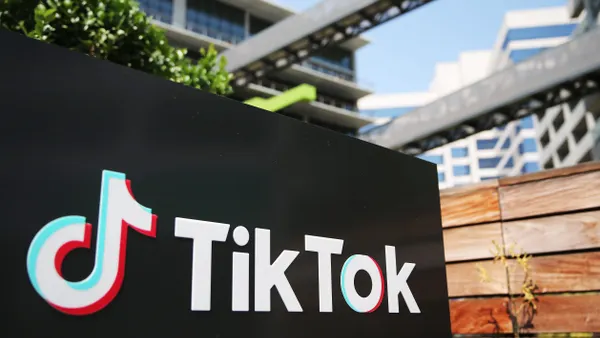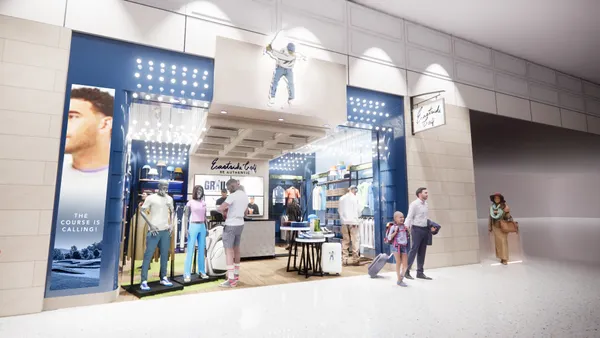In a retail landscape where customers are overwhelmed by choices — where to shop, how to shop, which brands to shop — loyalty is more important than ever. It's not just about the sheer number of competitors, though. The convenience of retailers like Amazon and Walmart puts additional pressure on the rest of the field to provide not only a unique experience, but also rewards that make it worthwhile for shoppers to stick around.
In the past year, the space was reshaped when a slew of retailers reinvented, upgraded and dropped loyalty programs. The multi-retailer Plenti program shut down in July after Macy's and several other important participants bailed. And several retailers have tweaked or added internal loyalty programs. Program changes have ranged from department stores, including Macy's, Nordstrom and Kohl's, to big-box and specialty retailers like Target, DSW and Lululemon.
While some of the changes are likely just the result of natural investment in that part of the business, retailers also face pressure from higher shopper expectations. In particular, the beauty sector has built a strong loyalty reputation, with category leaders like Sephora and Ulta both laying claim to popular, frequently updated programs. Even Sally Beauty released a new one in October.
A June report emailed to Retail Dive from Gartner L2 showed loyalty program increases across several different sectors, with launches reported in 2018 by 14.9% of department stores, 5.2% of specialty retailers and 5.9% of activewear retailers. There's still room for growth, though, according to a report from intelligence firm Beroe, which claims that the market will reach $201 billion by 2022. That report, which was emailed to Retail Dive, also notes "growing demand for customizable digital reward programs," in turn leading to higher costs for retailers.
In addition to a trend toward personalization, loyalty programs are also experiencing several other, sometimes contradictory, movements.
The decline of the store-branded card
Sitting at the heart of every loyalty program, below all of the 10% off coupons, buried underneath the free tote bags and blankets for every $50 purchase, lies a trove of email addresses, phone numbers and purchase history records. And while shoppers are busy trying to get a promotion for their next purchase, retailers are focused on scooping up all that customer data, analyzing it and using it to hone a strategy to get customers to shop again — just one more time.
Of course, the goal isn't really to get shoppers to come back once. The goal is to create a connection so strong that customers want to keep giving up their business. As a result, loyalty programs are being used more and more to build connections with retailers beyond data collection. Partially that's because customers grew frustrated with retailers asking for data at the checkout counter and doing nothing with it, but it's also because retailers found other ways to collect data, Yoav Susz, vice president of revenue at Optimove, told Retail Dive in an interview.
"[W]hen the economy is bad, when debt rates go up, when there's more unpaid debt, basically, that creates an enormous amount of risk within a retail portfolio."

Shannon Warner
Vice President in Capgemini Invent's North American Retail Practice
"People wanted to have data about their customers, people purchased in physical locations, they didn't have any other data points about the customer and by having them join a loyalty program, they were able to capture some of that data and then be able to target those customers," Susz said, noting that was a main driver of loyalty programs. "As data has exploded and data has become more commoditized and everybody has data about a vast majority of their customers, in my opinion it's becoming just less crucial to get people to opt into these loyalty programs. It becomes much more crucial to be able to look at your customer base and understand who you should be engaging with and talking to them," he added.
That's led to many retailers lowering the barriers for entry to their loyalty programs, mainly by getting rid of requirements for store-branded credit cards, which are a tough sell already, and a tougher one for younger consumers with past (and future) recessions on their mind. This year alone, Macy's expanded its loyalty program to members without its store card, Nordstrom upgraded its own to allow non-card holders to participate and J. Crew launched one in August without a card requirement.
Susz sees this as an indication that loyalty programs won't really exist in the future. Not that brand loyalty won't, but that retailers will cease trying to cultivate it through a sign-up program and increase efforts to maintain two-way relationships with customers instead. Either way, cultivating loyalty will be a necessity, as 70% of shoppers don't see loyalty as a reason to pay higher prices and the percentage of shoppers who can identify a favorite brand in any given space has declined substantially over the past decade, according to L2.
The shift away from store-branded credit cards is "probably a 20-year trend," though, according to Shannon Warner, vice president in Capgemini Invent's North American retail practice. She noted that a large number of retailers had credit card portfolios where they owned the receivables, and hence all of the profits, associated with those cards. The benefits to having a store-branded card have since dropped, however, as retailers sold off their portfolios to banks and received more "muted" benefits, leaving them with fewer reasons to launch store credit cards, and fewer still to require customers to open one just to get rewards.
"As long as the economy is good and debt rates are pretty steady and so forth, that is an incredibly profitable, lucrative way for a retailer to fund the profits of their business, which gives them more flexibility to do different, more exciting things on loyalty and other things that drive cost in the retail model," Warner said. "But when the economy is bad, when debt rates go up, when there's more unpaid debt, basically, that creates an enormous amount of risk within a retail portfolio."
Pay-to-play loyalty
At the same time that some retailers are trying to make it easier for customers to join, others are ratcheting up the price tag. Amazon Prime, which started out at $99 a year, upped its price in April to $119, and others have introduced a similar model, including Wayfair, which launched a $29.99 yearly membership program in October and Lululemon, which is testing one that, if rolled out further, would cost upwards of $128.
There are contradictory ways of viewing this trend. On one hand, putting a price tag on a loyalty program means customers have to really want to join it, potentially limiting a fee-based model to retailers with strong brands, strong value propositions or both. There will likely be fewer members than a free loyalty program would amass, and L2's report went so far as to say that removing barriers to entry was "key to combating declining program engagement." On the other hand, if a retailer can create a program with as much value as Amazon Prime, then the model makes a lot more sense.
"Amazon Prime actually makes people feel like they have elevated status, even though you pay for it and anybody can pay for it."

Bram Hechtkopf
CEO of Kobie Marketing
According to Bram Hechtkopf, CEO of Kobie Marketing, Amazon Prime is partially so successful because it creates emotional loyalty with customers, which is based on status, habit and reciprocity. That emotional loyalty, over time, also makes the retailer's customers less price sensitive because they're already paying to receive the benefits of the membership.
"What wins out in the research we've done are: convenience, which leads to habit, and you can think about Amazon Prime as a good example of that," he told Retail Dive in an interview, "and status — how a brand makes you feel. Amazon Prime actually makes people feel like they have elevated status, even though you pay for it and anybody can pay for it. It gives people a sense of pride."
Having members pay for a membership program also allows retailers to offer more valuable services, like free two-day shipping that's become a staple of Amazon Prime, which might make a paid program more worthwhile to customers than a free one that simply offers $10 off periodically. Though Warner expects more retailers will have both options in the future.
Some of the benefits for a paid program can impact loyalty by a decent amount, though, according to a Capgemini report emailed to Retail Dive. Two-hour delivery increases loyalty for 55% of shoppers, and same-day does the same for 61%, per that report. The downside to the model, though, is that offering those services is not just costly for the customer, but also for the retailer.
"For example, a customer who wants to have their groceries delivered to their home twice a week — that's a very expensive value proposition for a retailer and something that actually makes it very difficult for them to be profitable," Warner said. "So, selling a membership helps them to provide that customer with more personalized, more engaging services, but also helps them to offset the higher cost to serve and retain their existing profit margins. I would argue that most of these retailers who are introducing cost-based subscription services are probably not even breaking even in what it costs them to serve that customer."
"If I'm giving someone a discount or if I'm giving someone the right to return or I'm giving them a coupon, I need to make sure that that's somebody that has a high lifetime value and it's worth my while."

Yoav Susz
Vice President of Revenue at Optimove
Indeed, loyalty programs or policies that are too generous have been a problem for some retailers in the past, and have even forced them to change popular practices in order to maintain profitability. Bed Bath & Beyond has become famous for a generous number of coupons that its customers love, but which are hurting the company's financials and were partially responsible for a downgrade by S&P Global in October.
L.L. Bean, likewise, was forced to pull back on its lifetime return policy about a year ago, after the retailer discovered that the policy was being abused 15% of the time. It's a trap that's easy to fall into if retailers give promotions or services out to anyone that walks through the door, Susz said.
"If I'm giving someone a discount or if I'm giving someone the right to return or I'm giving them a coupon, I need to make sure that that's somebody that has a high lifetime value and it's worth my while," Susz said, cautioning against treating every customer the same. "Otherwise you do end up giving the wrong offers to the wrong people and if [you] know that somebody is a quote-unquote 'promo pirate,' you need to make sure that you're not doing something that is just cash-flow negative."
More than 10% off coupons
As loyalty programs evolve, so do the rewards. Discounts aren't necessarily going away, but experiential rewards and services are becoming much more prevalent as retailers look for ways to increase the value of their programs. According to L2 Gartner, 61% of brands offered both experiential and monetary benefits in 2018, compared to 47% the year before, and that's also translated to which types of rewards have been adopted on a broader scale.
Birthday perks were up by 7% in 2018, early product access and early sale access both increased by 11%, and free service and service discounts rose by 3%. The report also noted that the most successful brands offered a mix of monetary and experiential benefits, as well as "boosting personalization efforts and creating a seamless mobile experience."
Over the past year or two, we've seen glimpses of member offerings that are far from ordinary. In 2017, Sephora launched a members-only social platform, for example, which encourages shoppers to talk to each other about everything from how well a product works to beauty trends to the best items for a particular problem (e.g. dry skin, acne, etc.). The idea was to create a space where loyalty members could learn from each other, no purchase necessary.
Nike took it a step further with its launch of an entire members-only store concept, dubbed Nike Live, which debuted in Melrose, Los Angeles. Far from a generic promotion, the store is an attempt to create products based on data from a given geography and dish it back to the members in that locale. It also does a good deal to make members feel like they're part of an exclusive program — a store just for them.
"I think that the range of value-added services — we've just started to scratch the surface of what those will be."

Shannon Warner
Vice President in Capgemini Invent's North American Retail Practice
Learnings from that store are already being applied to some of Nike's flagships, and the offerings piloted by these retailers are likely a sign of what's to come for loyalty programs at large, Warner said.
"It won't just be points or coupons or emails. It will be value-added services, it will be free shipping, it'll be invitations to exclusive events, it'll be information and content that's targeted and relevant," she said. "I think that the range of value-added services — we've just started to scratch the surface of what those will be and I think that will be the biggest thing that marketers will be scratching their heads to figure out."
Susz agrees that experiential rewards are going to be a bigger part of loyalty programs, but he also noted that the way retailers handle loyalty will likely change as the economy does. When things are good, experiential rewards will be top of mind, but when things are rough, monetary incentives will likely come swinging around again.
As the type of rewards shift, the channels for cashing them in are too. Mobile is becoming a more important part of programs than in the past, with nearly a third of consumers saying it's their favorite way to show membership in stores, according to L2. Victoria's Secret's Pink refreshed its mobile app and loyalty in September, Target has further integrated its app loyalty and the entire Nike Live concept (and its new New York flagship) is structured around the app.
That being said, the convenience isn't quite there yet. Per L2's report, 84% of retailers integrate their loyalty programs into a branded app, but only 22% allow users to track their rewards on the home screen. That lack of convenience can pose problems for retailers, especially if they're not providing a win-win service to the customer, Amit Bivas, vice president of marketing at Optimove, told Retail Dive in an interview. And it's essential that they're giving the customer value.
"I think that a lot of brands have understood that the acquisition game will only get them so far and they're now trying different things in order to make sure they're — I don't want to say monetizing their customer base — but that's the truth," Bivas said.














